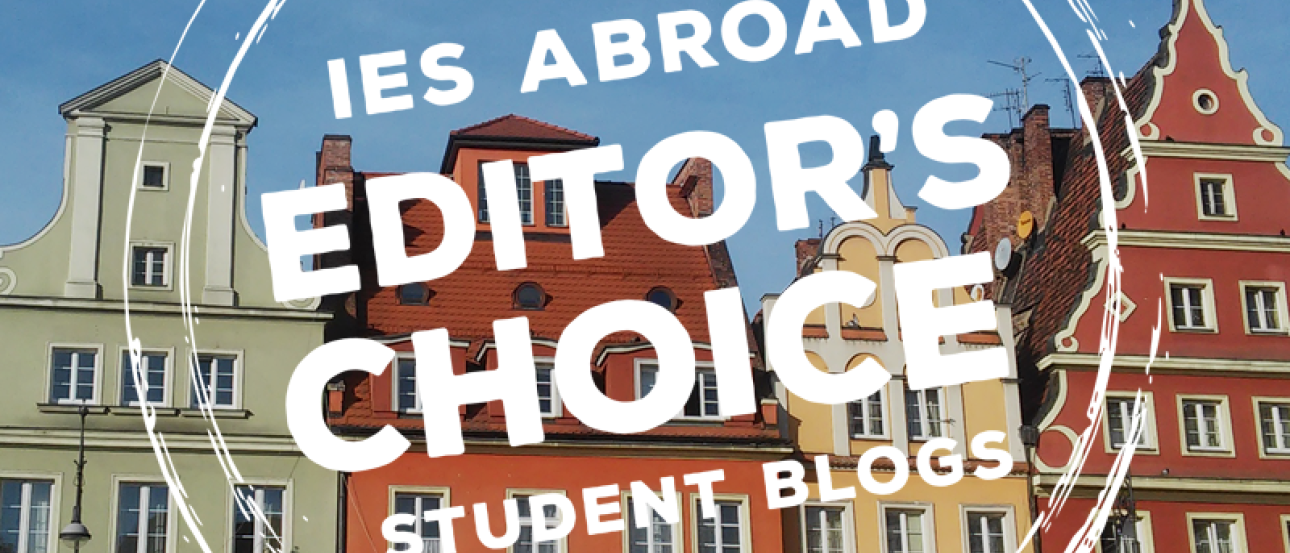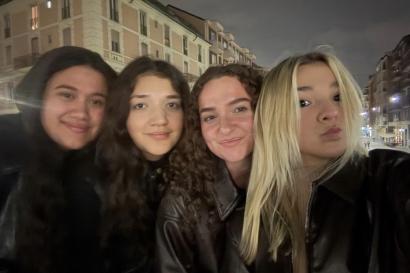Wrocław, Poland
The first stop on the New Old Europe tour was the city of Wrocław, in Poland. A few things were immediately apparent; the city was quirky, endearing, intriguing with it’s mysterious side streets marked with graffiti and neon lights. These quirks were further expressed through their pastel painted buildings, the fronts looking flat and fake like the set on a stage. And best of all, throughout the city you can find around 300 gnome statues, each with their own unique personality traits and stories.
Below: The Market Square
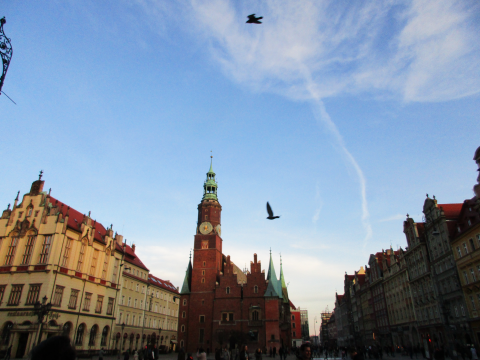
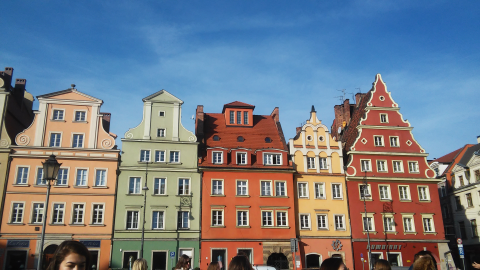
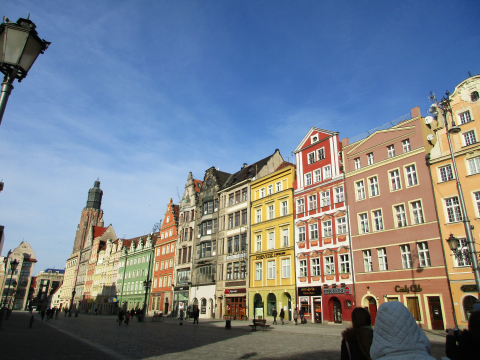
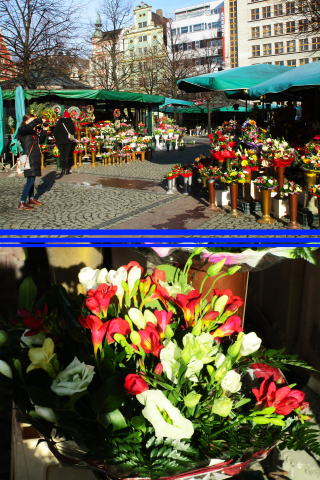
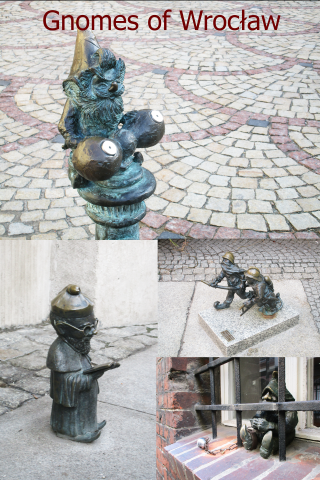
Wrocław was small enough that we could partake in a walking tour that instantly gave us an understanding of how to get around, hands on. I preferred this walking tour to the bus tours we had in the other two cities, both of which were easy to fall asleep in the warm rumble of the bus.
The food was the best I had throughout the trip. A welcome dinner at the restaurant and pub Bernard allowed us a diverse feast and warm beers flavored with plum, fig, cherry, and more.
On the walking tour we saw the Panorama of Raclawice, a detailed painting of a scene from the Racławice Battle, which was a fight for Polish Independence. I really enjoyed this piece because I could appreciate it both as a telling of an important historical event, as well as a beautiful painting. In front of the panorama was real sand, dirt, wood, and broken carts that laid between the viewer and the painting (known as tridimensional accessories), immersing the scene into a three dimensional form.
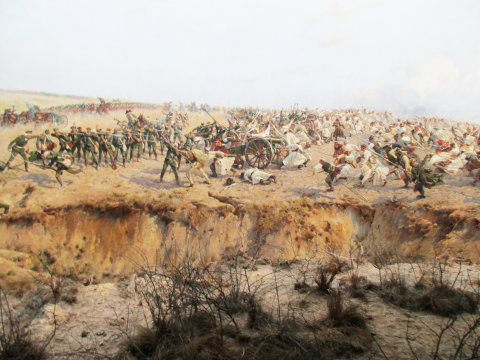
One of my favorite parts of Wrocław was the Tumski Bridge, also known as Lover’s Bridge, which has hundreds of padlocks with couple’s initials written upon them. After locking the padlocks in place, couples throw the key into the Odra River.
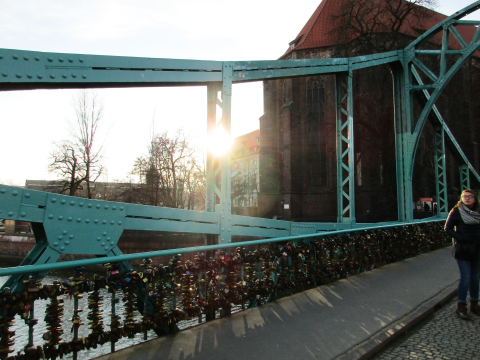
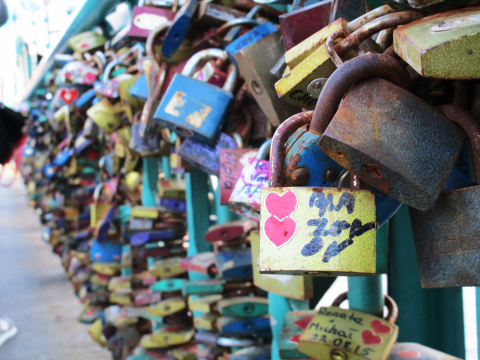
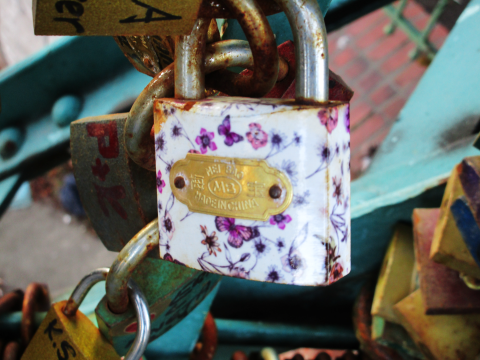
At the Cathedral of Saint John the Baptist on Cathedral Island, some friends and I bought tickets to travel to the top of one of the spires of the church. We gained a 360 degree view over Wrocław which was as beautiful as it was windy. The Cathedral itself had suffered from a few fires, which we saw in pictures on the inside. The style of the church is one of my personal favorites; Gothic.
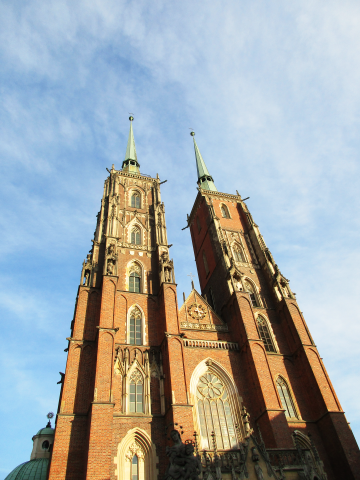
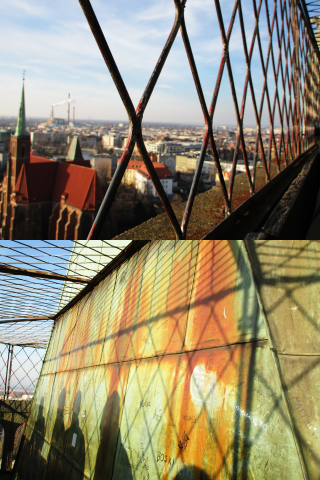
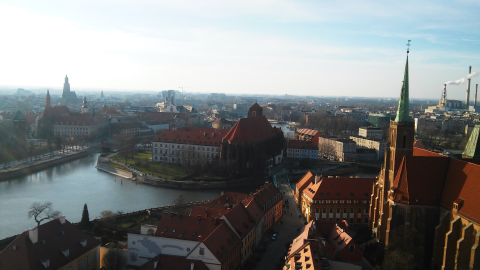
A few friends and I grabbed dinner the second night at the restaurant Konspira, which also acted as a historical education center. We walked through the wardrobe to a “secret” room, where there were shelves with various authentic items from the 80s. It provided information on the anti-communist opposition in Wrocław. The menus were printed in the form of newspapers, giving information about Solidarity. The walls were adorned with political comics and newspaper clippings of the 1980s. I got the “Anti-Communist pierogi,” as well as the kawa biurowa fusiata, which was ground coffee served in the “old-school communist style glass and holding basket.” The food was on the cheaper side (we found it in the Cheap Eats section of our Wrocław In Your Pocket guides), and delicious. They serve traditional food, but often with a twist. The profits they make go to local social projects.
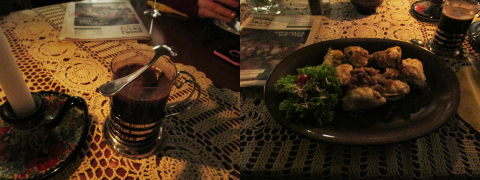
Before we left Wrocław, we quickly visited the Old Jewish Cemetary. Markers ranged from simply designed, to oriental trees and broken roses.

Dresden, Germany
Perhaps it was the exhaustion from the exploration of Wrocław, or the location of our hostel which required that we travel farther to experience the authentic city; either way, I never quite got an accurate feeling of Dresden. We only had an evening and one full day there, part of the time of the full day used for a bus tour. I explored this city the least.
Important to note was the Mexican themed hostel that we stayed in. Why it was Mexican themed is a mystery. I stayed in the topmost floor which was a pain to carry my suitcase to, but had the best views from it’s various skylights. The walls were painted bright yellows and greens, with dancing skeletons on their surfaces.
During the walking portion of our tour of Dresden we saw the Fürstenzug, a large mural that shows the various rulers of Saxony. It was made with porcelain tiles, and is the largest porcelain artwork in the world.

During the bus tour, we stopped at Castle Pillnitz, a restored Baroque Palace. We explored the land outside which was vast and beautiful. However, we were assured that the area was much nicer in the spring and summer, with the flowers and trees in full bloom.
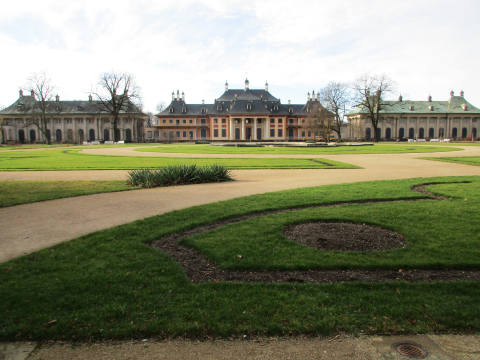
Some friends and I visited the Residenzschloss, which had the Grünes Gewölbe, or Historic Green Vault, which was the Museum of treasury art and Baroque treasure chamber. They had art made of bronze, silver, mother of pearl, coconuts, ostrich eggs, and amber, tiny statues carved from ivory, and exquisitely jewel encrusted. The collection had more than 2,000 pieces made by jewelers and goldsmiths. On higher floors were the Türkische Cammer (Turkish Chamber), Rüstkammer (Armoury), the Münzkabinett (Coin Cabinet), Kuperstich-Kabinett (Collection of Prints, Drawings, and Photographs).
The Türkische Cammer displayed Turkish clothing, shoes, tents, and flags in dim lighting to protect the old fabric. The Rüstkammer had a large display of armory, worn by adult men and children alike. I enjoyed the display as it showed jousting armory, which I have seen used in action before, as jousting is the official sport of my home state Maryland. The Kuperstich-Kabinett was what I was most interested in seeing, which was filled with artists, some contemporary, all of which I was unfamiliar with. My favorites included the wind drawings by Rikuo Ueda, and the embroidered pieces by Ines Beyer (look them up if you’re an art lover like me!). Photographs were not allowed here, so I suppose you will just have to visit it yourself the next time you stop by in Dresden.
Below: Dresden Cathedral
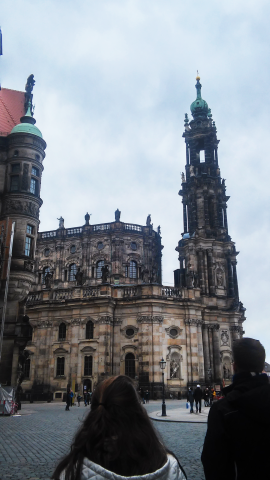
Below: View of the Elbe River
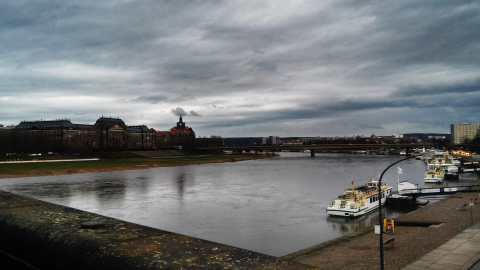
Up Next: Berlin!
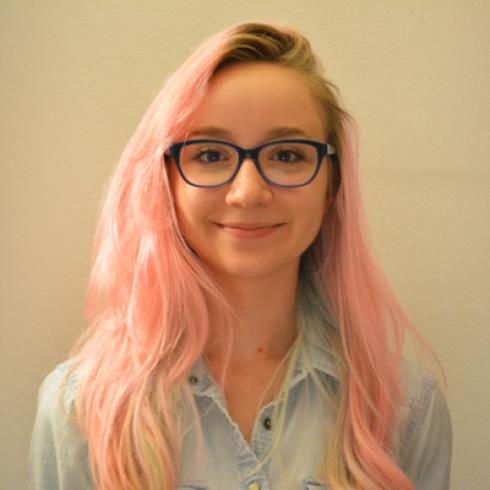
Selina Donahue
<p>Selina is a Junior Studio Art Major at the Catholic University of America in Washington, D.C. She enjoys long walks in the halls of art museums, eating too many cupcakes, and absorbing the world around her to feed as inspiration for all her creative endeavors. Her specialties lie in taking too many pictures and expressing joy over the little things. Selina is excited to share the beauty she sees all over Vienna during her stay with all who hop on over to her little blog!</p>
